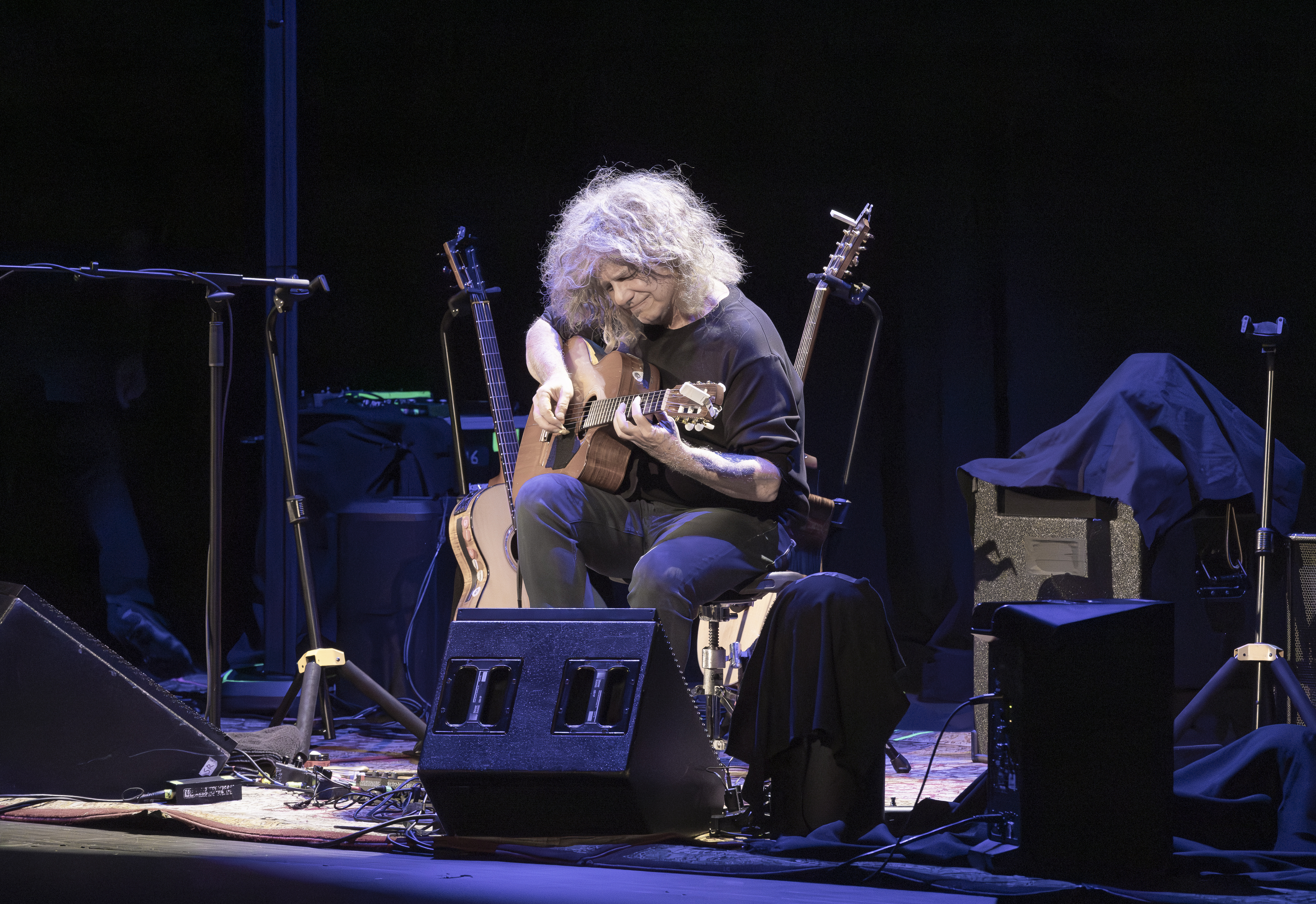Is it possible to win 20 Grammys and even more “Best Jazz Guitarist” polls, to be an inductee into a variety of Halls of Fame including those of Downbeat Magazine and your home state and still be underrated? The answer is a yes if you are the ceaselessly creative and melodic Pat Metheny.

Pat’s latest venture is “The Dream Box Tour,” a solo concert extravaganza unlike any before it in the world of guitaring. Pat’s nearly two and a half hour performance on April 13 at The Bardavon was not just a showcase of his massive skills as an instrumentalist, composer and interpreter of classic songs. It was a revelatory journey through new technology being brought to the fore through Pat’s perpetual experimentation and innovation of the guitar in partnership with his longtime luthier, Linda Manzer.
Throughout his career, Metheny’s signature has been his lyricism – his unchallenged capacity to weave a world of gorgeous melody and lush harmony in his original compositions and interpretation of jazz standards like “I Fall in Love Too Easily” and pop tunes like the Beatles’ “And I Love Her.” Not as resonant with fans have been his periodic excursions to jazz’s freer edges and even noise rock. These include his collaborations with Ornette Coleman on the album Song X and The Sign of Four with avant-garde guitar pioneer, Derek Bailey.
To me, Pat is a bit like Marilyn Monroe, the talented actress who doesn’t quite get the full credit she deserves because you are blinded by her simple beauty. In Pat’s case, it’s the relentless pretty he pulls out of his guitar.
At this concert, Metheny performed on at least ten different axes by my count, the majority modified in intriguing ways via their amplification, number of strings and their gauges (to enable deep bass accompaniment), his alternative tunings and electronics. The showstoppers were his 42-string guitar named Pikasso and his truly ingenious Orchestrion. The latter is a Rube Goldberg-like device through which his guitar triggers an ensemble of other acoustic and electric instruments, from various oddball percussion to a duo of xylophone-like devices and much more.
Pat began his performance with a 15-minute suite on a traditionally-tuned nylon stringed guitar. Here he interweaved bits of songs like his popular “Phase Dance” and “This Is Not America.” This was a followed with a set pulled from his duo album with bassist Charlie Haden, Beyond Missouri Sky. This medley included “Waltz for Ruth,” “Two for the Road” and his take on Ennio Morricone’s theme from the Italian cinema classic, “Cinema Paradiso (Love Theme).”
Metheny provided some shock-and-awe when he moved to one his modified 8-steel string acoustics for a super-percolated version of the strum-fest “Over on 4th Street” from his album One for the Boys. Next he unleashed his inner Derek Bailey/Eugene Chadborne when conjured a cacophony by string-bashing and pick scraping – a bit of noise rock, all done on an acoustic.
Pat also brought out his 42-string Pikasso for a long improvisation. This instrument’s sympathetic strings enable Metheny to do harp-like glissandos and pluck melodies and anchor it all with very deep bass notes courtesy of Pikasso’s 90+ gauge strings.
He then moved to his uniquely strung baritone guitar for a medley of serene covers included on popular albums like 2011’s “What’s It All About.” This guitar combines two uber-low bass strings with higher range and doubled third and fourth strings and mid-ranges on the traditionally higher tuned first and second strings. Pat says he approaches playing and composing on this guitar as if he was a one-man string quartet. This and most of Pat’s acoustic guitars are outfitted with microphones within the body to provide extra resonance and depth. During this chapter of his master class on guitar, Metheny performed gorgeous versions of “Alfie,” “Rainy Days & Mondays,” Carly Simon’s “That’s The Way I Always Heard It Should Be” and the Bossa Nova staple, “The Girl From Ipanema.”
Metheny then went to another modified guitar, a hollow body electric, for extended versions of several tunes including “Morning of the Carnival.” He first laid down deep bass and chordal loops for accompaniment before ripping into more bebop-inspired improvisations.
Pat’s hard-working guitar tech, Andre Cholmondeley, then ran about the stage to unveil the many parts of The Orchestrion, which Metheny used for a dazzling improvisational display. He would then go to his vintage 1984 synth guitar to solo over the well-tempered musical maelstrom he triggered with The Orchestrion. He would end this outstanding showcase of virtuosity with luminous versions of “Seuno con Mexico” and the Jimmy Webb/Glen Campbell classic, “Wichita Lineman.”


Comments are closed.